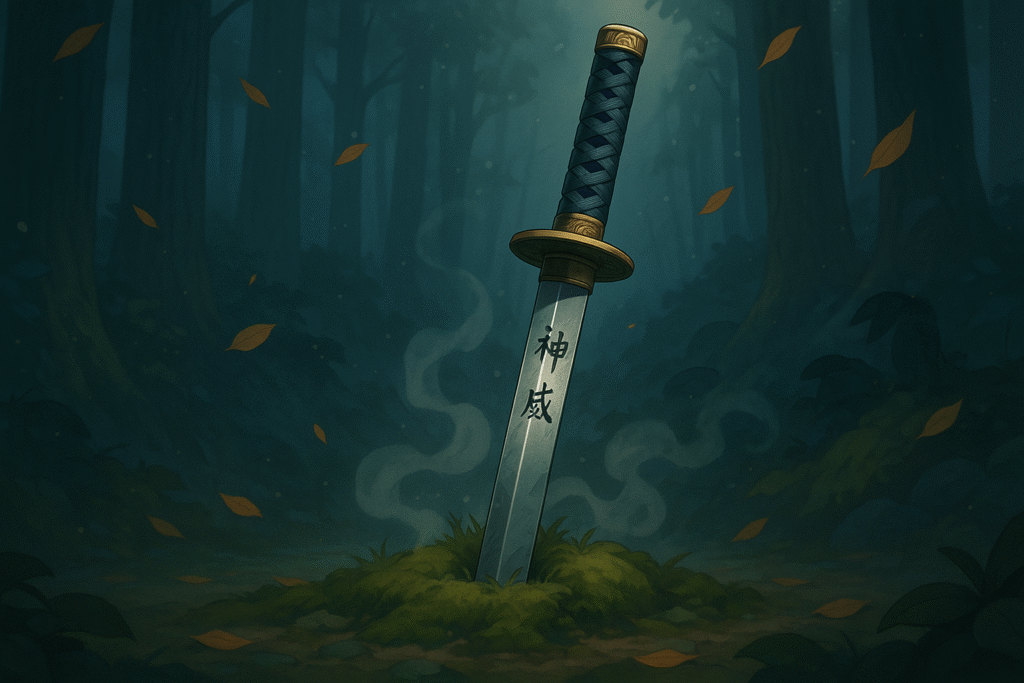Have you ever wondered why Japanese sword names carry such mystical power that they seem to leap off the pages of history books? Picture yourself in ancient Japan, where master swordsmiths forged more than mere weapons—they created legends with names that would echo through centuries. These aren’t just random titles; Japanese sword names represent the soul, purpose, and destiny of each blade.
From the imperial treasure Kusanagi-no-Tsurugi to the cursed Muramasa blades, Japanese sword names tell stories of gods, demons, heroes, and the eternal struggle between light and darkness. Whether you’re a martial arts enthusiast, history buff, or someone fascinated by Japanese culture, understanding these legendary weapon names opens a window into Japan’s rich heritage.
Why Japanese Sword Names Matter in Cultural Understanding
Japanese sword nomenclature goes far beyond simple identification—each name carries profound cultural significance. Unlike Western weapons that might be named after their makers or owners, Japanese sword names often reflect spiritual beliefs, natural phenomena, or legendary deeds. This naming tradition connects directly to the Japanese language’s poetic nature, something you might explore further in our JLPT N5 Study Guide to understand the linguistic foundations.
The practice of naming swords reveals how deeply intertwined craftsmanship, spirituality, and storytelling are in Japanese culture. These names weren’t chosen randomly; they emerged from centuries of tradition where weapons were considered sacred objects deserving of reverence and respect.
Imperial and Divine: The Most Sacred Japanese Sword Names
Kusanagi-no-Tsurugi (草薙の剣) – “The Grass-Cutting Blade”
Perhaps the most revered among all Japanese sword names, Kusanagi-no-Tsurugi stands as one of Japan’s Three Imperial Regalia. Legend tells of the storm god Susanoo discovering this divine blade within the body of the eight-headed, eight-tailed serpent Yamata-no-Orochi. The sword’s power to command winds makes it more than a weapon—it’s a symbol of divine authority.
Shisui (止水) – “Still Waters”
This legendary katana earned its name from its mystical ability to calm turbulent waters. Maritime legends speak of samurai carrying Shisui who could pacify raging storms with a single draw of the blade. The name reflects the Japanese appreciation for balance and harmony with nature.
Legendary Smiths and Their Named Masterpieces
The Masamune Legacy
Japanese sword names often honor their creators, and none are more famous than those bearing the Masamune signature. Goro Nyudo Masamune, considered Japan’s greatest swordsmith, created blades whose names still inspire awe:
- Honjo Masamune (本城正宗): Named after both its creator and the Honjo district, this katana represents the pinnacle of sword-making artistry
- Fudo Masamune (不動正宗): Combining the smith’s name with Fudo Myoo, the Buddhist deity of wisdom and fire
Want to explore Japan’s culture?
Discover Japan’s rich culture, traditions, and hidden gems with our expertly crafted guides. Get insider tips on travel, food, and history. All for free!
The Cursed Muramasa Blades
In stark contrast to Masamune’s peaceful reputation, Japanese sword names bearing “Muramasa” carry darker connotations. Sengo Muramasa’s blades were believed cursed, driving their wielders toward bloodshed and tragedy. These names serve as cautionary tales about the double-edged nature of power.
Heroic Deeds Immortalized in Steel
Dojigiri (童子切) – “The Demon Slayer”
This tachi earned its fearsome name when Minamoto no Raiko used it to defeat the oni Shuten-doji. The blade’s designation reflects how Japanese sword names often commemorate specific heroic acts, transforming weapons into historical monuments.
Onimaru (鬼丸) – “Demon Circle”
Another demon-slaying blade, Onimaru’s name speaks to its supernatural reputation for warding off evil spirits. This katana demonstrates how Japanese sword names could serve as protective talismans for their bearers.
Religious and Spiritual Influences
Juzumaru (数珠丸) – “Prayer Beads”
This unique tachi belonged to the Buddhist monk Nichiren, its name derived from the rosary beads adorning its hilt. Japanese sword names like this show how Buddhism influenced even martial culture, blending spiritual devotion with warrior traditions.
Mikazuki Munechika (三日月宗近) – “Crescent Moon”
Named for the distinctive crescent-shaped hamon (temper line) on its blade, this sword represents how Japanese sword names could celebrate aesthetic beauty alongside martial function. It’s one of Japan’s designated “Five Great Swords.”
Understanding Japanese Sword Classifications
To fully appreciate Japanese sword names, understanding basic weapon types helps:
Katana (刀): The iconic curved blade, 60-80cm long, worn edge-up Wakizashi (脇差): Shorter companion sword, 30-60cm, for close combat Tanto (短刀): Dagger-length blade, 15-30cm, for personal defense Tachi (太刀): Predecessor to katana, worn edge-down, deeply curved Odachi (大太刀): Oversized battlefield sword, over 90cm long
Each type carried naming conventions reflecting its purpose and cultural context—much like how Japanese linguistic patterns work, which you can explore in detail through our comprehensive language resources.
Modern Impact and Cultural Legacy
Today’s Japanese sword names continue influencing popular culture worldwide. From anime characters wielding legendary blades to video games featuring named weapons, these ancient appellations maintain their mystique. Understanding their origins enhances appreciation for Japanese storytelling traditions and cultural values.
The naming conventions also appear in modern contexts—contemporary sword enthusiasts and collectors often research historical Japanese sword names when acquiring pieces, maintaining connections to Japan’s martial heritage.
Learning From Legendary Blades
Japanese sword names offer more than historical curiosity—they provide insight into Japanese values, spirituality, and artistic expression. Each name represents a story, a belief system, or a moment when ordinary steel became extraordinary through human dedication and skill.
These appellations remind us that in Japanese culture, naming something properly gives it power and purpose. Whether studying the language, martial arts, or cultural history, understanding how Japanese sword names developed enriches our appreciation for Japan’s complex civilization.
Frequently Asked Questions About Japanese Sword Names
Q: What makes Japanese sword names different from other cultures’ weapon names? A: Japanese sword names often reflect spiritual beliefs, natural phenomena, or legendary deeds rather than just identifying the maker or owner.
Q: Are all famous Japanese swords named? A: Not all swords receive individual names—typically only exceptional blades with historical significance, legendary powers, or association with famous figures earn specific appellations.
Q: How were Japanese sword names traditionally chosen? A: Names emerged from various sources: the sword’s appearance, its maker’s reputation, legendary deeds performed with it, or spiritual associations.
Q: Do modern Japanese swords still receive names? A: Contemporary sword makers occasionally name exceptional pieces, though the practice is less common than in historical periods when swords held greater cultural significance.
Q: What’s the most famous Japanese sword name? A: Kusanagi-no-Tsurugi, one of Japan’s Three Imperial Regalia, is arguably the most famous and culturally significant Japanese sword name.
Love Japan? Stay in the Loop!
Get the best of Japan straight to your inbox: language, culture & travel insights!




